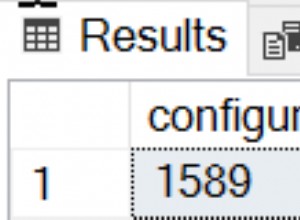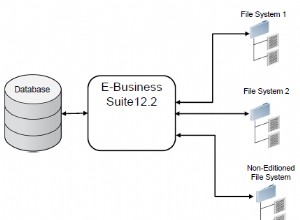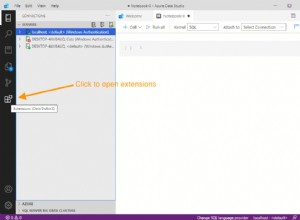Per eseguire questa attività sarà necessaria una funzione t-sql e un cursore. fn_SplitList ti consentirà di dividere in base a un delimitatore. Una volta che hai questa funzione, puoi creare un cursore da eseguire sui tuoi dati aggiornando ogni record. Ho creato un esempio usando @table1.
Funzione
CREATE FUNCTION [dbo].[fn_SplitList]
(
@RowData varchar(8000),
@SplitOn varchar(5)
)
RETURNS @RtnValue table
(
Id int identity(1,1),
Data varchar(100)
)
AS
BEGIN
Declare @Cnt int
Set @Cnt = 1
While (Charindex(@SplitOn,@RowData)>0)
Begin
Insert Into @RtnValue (data)
Select
Data = ltrim(rtrim(Substring(@RowData,1,Charindex(@SplitOn,@RowData)-1)))
Set @RowData = Substring(@RowData,Charindex(@SplitOn,@RowData)+1,len(@RowData))
Set @Cnt = @Cnt + 1
End
Insert Into @RtnValue (data)
Select Data = ltrim(rtrim(@RowData))
Return
END
Codice per eseguire l'aggiornamento
declare @table1 table(id int primary key
,words varchar(max))
declare @id int
declare @words varchar(max)
insert into @table1 values(0, 'word1, word2, , word3, word4')
insert into @table1 values(1, 'word1, word2, word3, ,')
insert into @table1 values(2, 'word1,,,, ; word2')
insert into @table1 values(3, ';word1 word2, word3')
declare updateCursor cursor for
select id
,words
from @table1
open updateCursor
fetch next from updateCursor into @id, @words
while @@fetch_status = 0
begin
declare @row varchar(255)
select @row = coalesce(@row+', ', '') + data
from dbo.fn_SplitList(@words, ',')
order by id desc
update @table1
set words = @row
where id = @id
fetch next from updateCursor into @id, @words
end
close updateCursor
deallocate updateCursor
select *
from @table1




